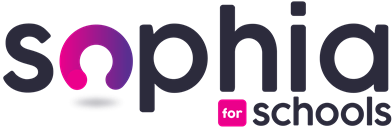Understanding Dyslexia

Course Description:
One in five children are dyslexic and find the traditional ways of teaching and assessment difficult.
This introductory course aims to give you, the teacher, insight into what dyslexia is and, what up-to-date research has proved, it is not. It looks at how you can start accommodating and supporting challenges, and unlocking gifting in your dyslexic students. The course explains how the dyslexic brain isn’t a handicapped brain but a differently wired brain by looking at what dyslexic people are naturally better at than non-dyslexics. It discusses why the world needs what dyslexic brains offer by looking at how the workplace is already changing to value dyslexic thinking. You will come to understand that the weaknesses you see in the classroom are trade-off costs in payment for four areas of cognitive strengths of dyslexia. Once you understand these four areas of strengths and their trade of challenges, we’ll get practical for you and your classroom. We start by looking into how you can help dyslexic students with reading and writing, using what you’ve learnt about the profile. Then we discuss the use of assistive technology and other accommodations for dyslexic students and explore ways in which dyslexic students can learn to study. Finally, we will consider how to foster confidence and a growth mindset in your dyslexic students.
Course Learning Objectives:
- Describe what dyslexia is and differentiate it from common misconceptions.
- Appreciate the concept of neurodiversity and recognise the unique cognitive strengths associated with dyslexia.
- Understand and apply strategies for accommodating and supporting dyslexic students in the classroom.
- Develop effective approaches for helping dyslexic students with reading and writing challenges based on their individual profiles.
- Explore the use of assistive technology and other accommodations to facilitate learning for dyslexic students.
- Analyse various methods and techniques for teaching dyslexic students how to study effectively.
- Foster confidence and a growth mindset in dyslexic students to help them overcome challenges and maximise their potential.
- Understand how the workplace is evolving to value dyslexic thinking and how dyslexic individuals can contribute positively to the workforce.
Course Learning Outcomes:
By the end of this course, participants should be able to:
- Articulate a clear understanding of dyslexia, dispelling common misconceptions, and appreciating it as a unique cognitive difference.
- Embrace the concept of neurodiversity and recognise the strengths that dyslexic individuals bring to the table.
- Identify and discuss primary cognitive strengths associated with dyslexia and how these trade-off with challenges.
- Implement practical strategies for accommodating and supporting dyslexic students in the classroom, creating an inclusive environment.
- Apply personalised approaches to help dyslexic students improve their reading and writing skills.
- Evaluate and implement appropriate assistive technology and accommodations to enhance learning outcomes for dyslexic students.
Teachers will be equipped with the knowledge and practical skills to create a more inclusive and supportive learning experience for their dyslexic students, ultimately fostering their personal and academic growth.
Resources & Assessment:
- The course provides a range of resources to support learners and facilitate the application of acquired knowledge.
- The course incorporates a comprehensive final assessment, known as the ‘Course Test’, designed to evaluate participants’ understanding of the essential concepts covered throughout the course. Upon successfully passing this test, participants will be awarded a course certificate.




